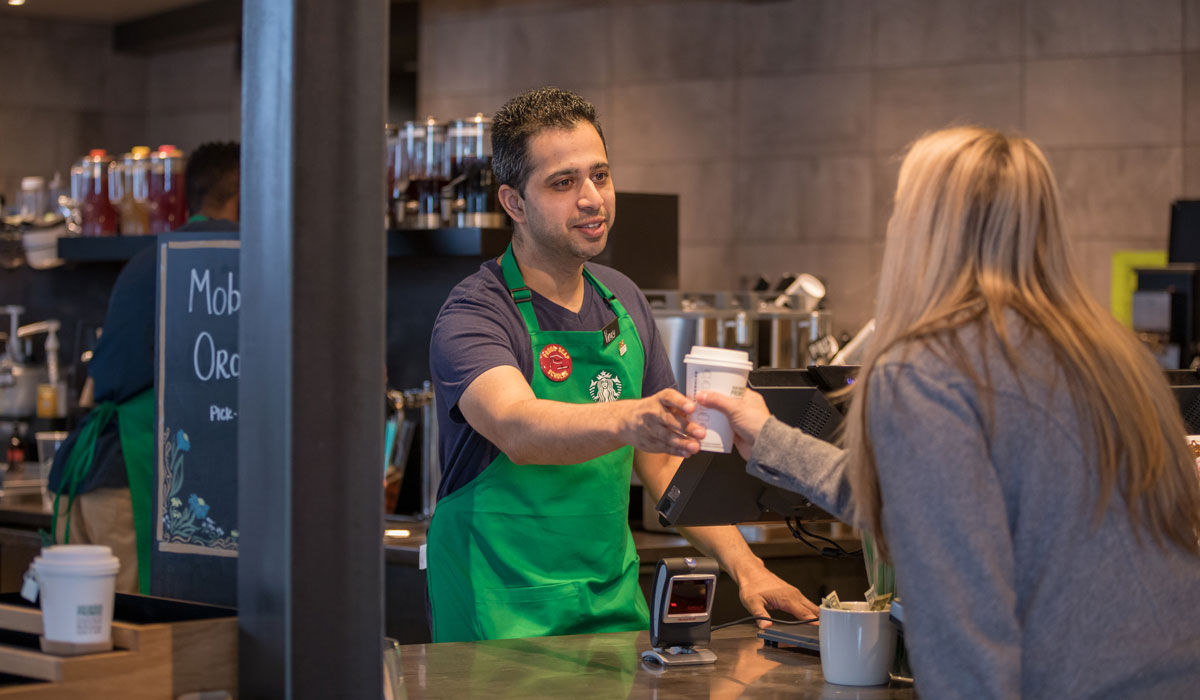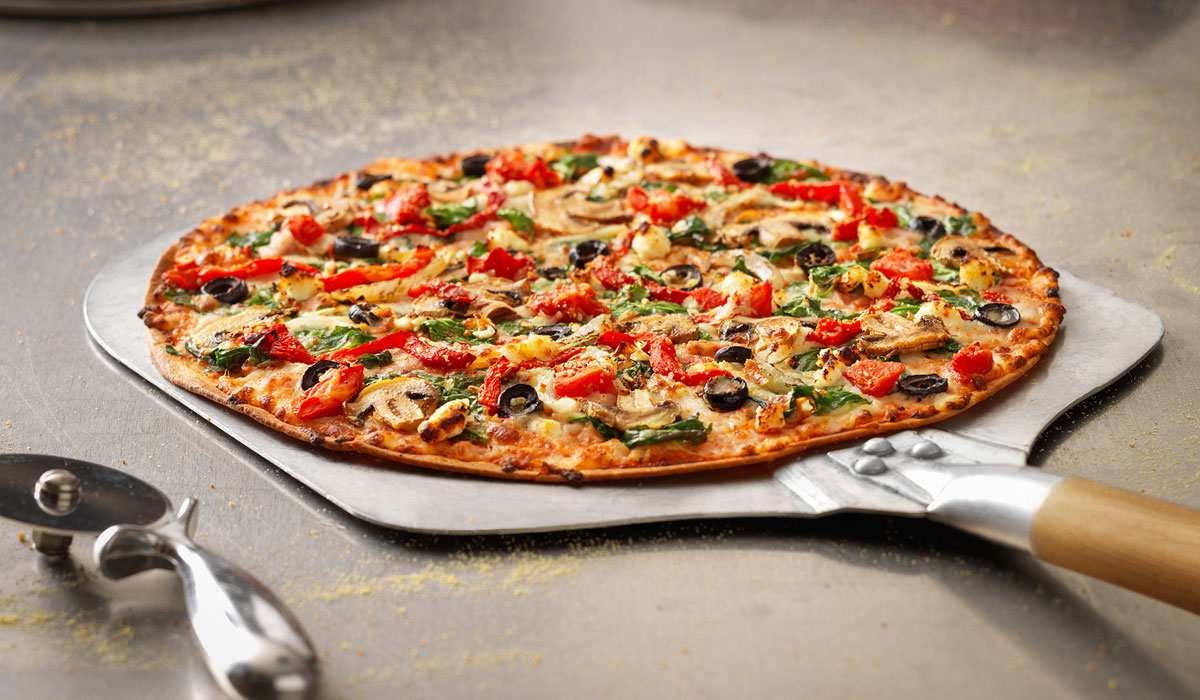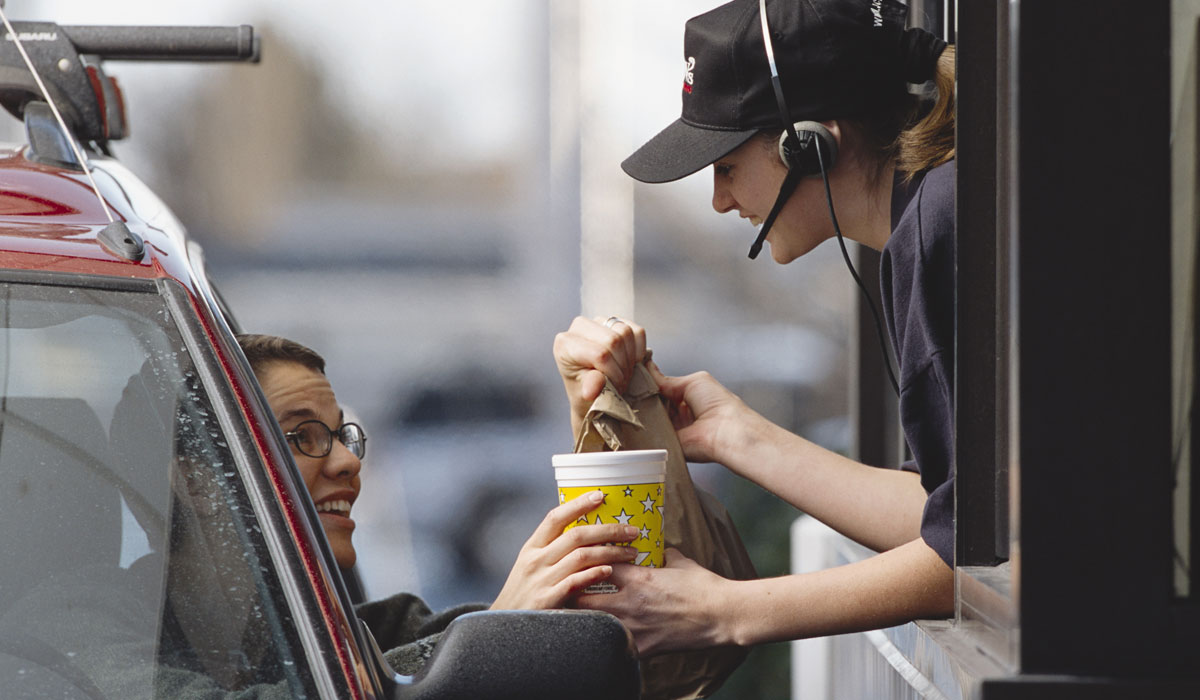In this earlier piece, we talked about how quickly things are changing for restaurants, especially in terms of who is willing to dine out and who isn’t. In a half-week span, the figure climbed 8 points to 27 percent of the 1,000 consumers polled by Datassential (the period ending March 14).
Given what these past few days have looked like, it was a safe bet to expect another spike. And, sure enough, that’s what happened. Datassential’s third installation of its ongoing coronavirus report, this edition titled “Into The Home,” which was fielded March 17–18, brought the “definitely avoid eating out,” group up to 47 percent—a stunning 27 percent leap since March 10. It’s a 20 percent hike from just four days ago.
THE REPORTS SO FAR
1. Coronavirus & The Impact on Eating
“It’s hard to overstate the magnitude of this increase, with now roughly half of consumers abandoning restaurants en masse,” Datassential said.
The spike was particularly pronounced among Boomers, jumping a massive 31 points. (Here are some tips to reach older guests during the crisis). In every report, fear has peaked in different places. Previously, it was parents. Now, it’s most prevalent in the aging population.
- 29 percent: Nervous, but will still eat out (–2 percent since March 14; –10 percent since March 10)
- 24 percent: Have no concerns whatsoever (8 percent since March 14; –17 percent since March 10)
Clearly, only one of those three categories is growing while the others are not. And the last one is evaporating.
Let’s look deeper at the critical set—“definitely avoid eating out.”
March 10
- Men: 21 percent
- Women: 18 percent
- Gen Z: 12 percent
- Millennial: 22 percent
- Gen X: 20 percent
- Boomer-plus: 20 percent
- Married: 25 percent
- Single: 11 percent
- Kids: 26 percent
- No Kids: 16 percent
March 14
- Men: 27 percent
- Women: 27 percent
- Gen Z: 16 percent
- Millennial: 26 percent
- Gen X: 29 percent
- Boomer-plus: 32 percent
- Married: 31 percent
- Single: 20 percent
- Kids: 31 percent
- No kids: 25 percent
March 18
- Men: 45 percent
- Women: 49 percent
- Gen Z: 32 percent
- Millennial: 41 percent
- Gen X: 46 percent
- Boomer-plus: 63 percent
- Married: 47 percent
- Single: 44 percent
- Kids: 41 percent
- No kids: 51 percent
While the boomer-plus spike is astounding, don’t lose sight of the no kids skyrocket. That’s gone from 16 percent to 51 percent in eight days. What we can say safely is that everybody is worried. They’re concerned about themselves just as much as their families. The care-free pack of consumers is getting washed up in COVID-19 awareness.
STAY UP TO DATE WITH OUR CORONAVIRUS LANDING PAGE
Speaking of, you can correlate these above figures with an overall understanding of what’s happening. And it’s no surprise to see coronavirus knowledge lift as people self-quarantine and immerse themselves in it, as opposed to distract with work, etc.

Datassential showed awareness of coronavirus in the U.S. to effectively be 100 percent at this point, with close to 80 percent of people saying they were “very familiar” with the situation. This represents a further increase of 8 points in four days, and a 13-point bump in a little over a week.
Additionally, concern over the virus rose sharply, up 12 points in four days. As of March 18, 61 percent of consumers said they were “very concerned” about the risk and were “hugely worried about my own personal health and plan to do whatever I can.”
Very familiar with coronavirus
March 10
- Very familiar with coronavirus: 58 percent
- Somewhat familiar: 39 percent
- Not familiar: 3 percent
March 14
- Very familiar: 71 percent
- Somewhat familiar: 27 percent
- Not familiar: 2 percent
March 18
- Very familiar: 79 percent
- Somewhat familiar: 21 percent
- Not familiar: less than 1 percent
Very concerned with coronavirus
March 10
- Very concerned: 41 percent
- Somewhat concerned: 49 percent
- Not concerned: 10 percent
March 14
- Very concerned: 49 percent
- Somewhat concerned: 42 percent
- Not concerned: 8 percent
March 18
- Very concerned: 61 percent
- Somewhat concerned: 34 percent
- Not concerned: 5 percent
These numbers speak pretty plainly.
What’s the issue?
Datassential points out one of the more troubling problems with COVID-19. Sure, awareness is high. But what exactly are people scared of when it comes to restaurants?
Consumers have limited tools to determine which restaurants are safe and which environments put them at risk, the company said. They fear coronavirus because it’s invisible.
“Frequent, visible, and overt sanitation is highly recommended, but beyond this people want transparency to free them from the unknown,” Datassential said. “Restaurants should be overly explicit in describing their safety and sanitation policies, from how often surfaces are disinfected to the precautions taken in food handling.”
Amazingly, Datassential found in its study, cleanliness is winning over taste right now. Has that ever happened before? Of course there are extremes (terrible health rating dissuading guests), but overall, this is almost never the case.
Datassential said the below data was “remarkable”—the fact people care more today if a restaurant is clean than if it makes tasty food.
“Consider the marketing implications. Rather than the beautiful food visuals that restaurants have long relied upon to promote themselves, it may be more effective to lead with a message around sanitation and safety,” the company said.
Considerations when selecting a restaurant
- Clean and sanitary: 45 percent
- Great taste: 36 percent
- Nearby: 36 percent
- Value: 34 percent
- Speed: 23 percent
- Healthy: 22 percent
- Variety: 19 percent
- Supporting restaurants that need help: 18 percent
- Good service/staff: 14 percent
- Locally/independently owned: 13 percent
To Datassential’s reflection, this looks like an Alice in Wonderland version of why diners pick restaurants. Some of those bottom categories are typically near the top, like good service. Healthy is another one that’s lost steam following a time when it was only climbing.
The takeaway is that there is no business as usual, status-quo going on. Will this change the restaurant industry forever? That’s something we’re going to discover in time.

Datassential also asked respondents, “If you owned a restaurant, what would you do to gain the public’s trust.”
There were some interesting takes:
“I would explain how I am screening my staff for the coronavirus and training them in food safety/handling. I would show how I am disinfecting my work surfaces and keeping takeaway counters/containers free from the virus. I would minimize customers and unscreened people from coming to the premises and touching things.”
You just can’t do enough of this.
“I would want them to know that all of my employees are healthy and don’t have the COVID-19. I would tell them that I still appreciate them supporting my restaurant in this time of change. I would want them to know that I will be there to make sure they have foods to eat from their favorite restaurant.”
It really feels like customers are worried if the people serving them have tested positive. A sign or website note that speaks to your restaurant’s employee sick program would be a good place to start. Or just finding any way possible to illustrate that everybody working is healthy.
“Have my employees get tested for the virus, if possible, and get a certificate or proof of health. Once I have this along with my employees, I’d advertise or post these notices at my restaurant. Most definitely, I’d offer deals to encourage the people to patronize my restaurant.”
There you go.
“If I were the owner of a restaurant now, I would have signage stating that all areas of the restaurant are sanitized multiple times during the day and after-hours. I would check (or have someone check) the temperature of each employee when they reported for their shifts. I would tell every employee that if they did not feel well that they need to stay home (and they would be paid for it). I would also be as transparent as I could to let the general public know what I was doing to mitigate COVID-19.”
And so it continues.
“I would keep in contact with my regular customers through text messages and emails. I’d proudly advertise (radio, TV and newspapers) how I and my staff are keeping the restaurant pristinely sanitary. I would make ordering easy—online—and have their food ready on time (or deliver it promptly).”
The marketing angle is an interesting one. We’re probably moving past the early stage communication strategies of “here’s what we’re doing to stay safe during COVID-19.”
Justin Mink, SVP of sales at marketing and technology firm Scorpion, told QSR restaurant brands should lead with empathy as they communicate and market to customers amid the global coronavirus outbreak.
Brands can take this time to remind customers that they are local—even the biggest national chains rely on local operators and franchisees—and are active members of their communities grappling with the same pandemic.
“Empathy. We’re part of your community—that’s the message right now,” he said.
Likewise, operators can continue to remind customers that they are open and taking extra precautions around sanitation and cleanliness. But Mink says restaurants must guard against leaning into the current crisis in consumer marketing lest they come across as tone deaf.
“This moment will pass, whether it’s in the next few weeks or next year it will pass,” he added. “I think it’s a fine line you have to walk between acknowledging the moment and not over playing your hand.”

The power of the drive thru
It’s no secret many quick-service restaurant chains are better equipped to navigate the COVID-19 crisis than other sectors.
A key reason, as President Trump recently alluded to: they can keep the drive thru open.
For consumers, it feels safer, Datassential said, because car feel like an additional protective barrier from other people. “For restaurants that don’t have a drive thru already, consider creating a makeshift version if possible—but make sure adequate social-distancing dynamics are in place to minimize or eliminate touch points,” the company said.
In this current climate of coronavirus, which of the following would you be very wiling to do?
Drive thru
- Total: 57 percent
- Gen Z: 45 percent
- Millennial: 54 percent
- Gen X: 55 percent
- Boomer-plus: 69 percent (this is key)
Pickup (order ahead)
- Total: 53 percent
- Gen Z: 40 percent
- Millennial: 49 percent
- Gen X: 55 percent
- Boomer-plus: 61 percent
Delivery
- Total: 47 percent
- Gen Z: 46 percent
- Millennial: 52 percent
- Gen X: 49 percent
- Boomer-plus: 40 percent
Curbside (bring to car)
- Total: 46 percent
- Gen Z: 37 percent
- Millennial: 47 percent
- Gen X: 45 percent
- Boomer-plus: 51 percent
Takeout/carryout
- Total: 46 percent
- Gen Z: 32 percent
- Millennial: 42 percent
- Gen X: 48 percent
- Boomer-plus: 53 percent
Walk-up window
- Total: 38 percent
- Gen Z: 29 percent
- Millennial: 42 percent
- Gen X: 36 percent
- Boomer-plus: 43 percent
The difference between takeout/carryout and delivery with boomers is something to circle. Delivery is still a low-adoption practice for older diners, and you don’t want to leave them out of this battle for transactions.
Part of the solution
On the bright side, Datassential found that many guests are open to an array of options to support restaurants. For operators, it’s just about finding the one they can execute safely, efficiently, and profitably.
What would motivate you to get food from restaurants during this time of Coronavirus?
- Order takeout/delivery today and get a discount to dine-in later: 38 percent
- Take-and-bake items: 31 percent
- Portion of your order donated to support people affected by coronavirus: 29 percent
- Multi-serving/family-sized items that can be eat over several meals: 29 percent
- Expanded delivery zones: 28 percent
- Expanded delivery hours: 25 percent
- Containers of your favorite restaurant’s sauces, dressings, or seasonings: 25 percent
- Groceries from the restaurant: 24 percent
- A free roll of toilet paper or bottle of hand sanitizer with your order: 21 percent
- Gift card purchases: 21 percent
Stocking up in multiple places
We continue to hear about people buying bulk at grocers. But what about restaurants? Datassential’s report said almost half of customers would purchase extra meals for the days to come, with the desire for multiples stronger among females, millennials, and Gen X.
Whether due to fear of sharing or the desire for convenience, customers willing to order multiple meals prefer food in individual containers, Datassential also noted. This is the clear choice across all demographics.
- 60 percent: Multiple portions of food in their own individual containers
- 40 percent: Bulk or family-sized serving trays of food, to be eaten over several meals
What are people ordering?
A vital point here, Datassential said, is to understand that many people who previously “lived to eat” are now “eating to live.” That’s why there’s been a spike in familiar foods people find safe.
Foods people want during the coronavirus crisis
- Pizza: 63 percent
- Burgers & sandwiches: 51 percent
- Meat entrees: 50 percent
- Pasta & noodle dishes: 44 percent
- Sides: 41 percent
- Mexican dishes: 40 percent
- Soups & chili: 37 percent
- Asian dishes: 34 percent
- Salads: 32 percent
- Desserts & sweets: 29 percent
“Despite drastically reduced traffic and ever-growing uncertainty, operators from large chains to local independents are trying their hardest to provide for consumers, many of whom are staying indoors,” Datassential said.
The company has seen everything from restaurants diving into delivery and takeout to jarring batches of freezer-ready soups and braises, and even crafting do-it-yourself kits for making kimchi at home (Chicago-based Passerotto).
“Creativity and proactiveness help in times of crisis, and consumers are responding in kind,” Datassential said.
Also, here’s a timeline leading up to this most recent report, from Datassential.
March 15
- Mandatory restaurant & bars closures in IL, CA, NY, OH, MA, WA
- Delivery, drive-thru, and takeout only in those states
- CDC recommends prohibiting gatherings of 50 or more for eight weeks
- 29 states have already announced school closures
- Fed cuts interest rates to nearly zero to support the economy
March 16
- White House guidelines include avoiding restaurants, bars, and gatherings of 10-plus people
- The DJIA drops 2,997 points, its largest single-day point decline in history
- France institutes a 15-day national lockdown
- Canada closes its border to all non-citizens + U.S. citizens
- Chains move off-premises, including McDonald’s, Taco Bell, Chipotle, and others
March 17
- Bay Area counties rolls out a “shelter in place” order, requiring residents to stay home
- White House explores direct payment to citizens as part of a proposed $850B stimulus
- President Trump hosts conference call with CEOs of major restaurant chains
- West Virginia becomes 50th state to report a confirmed case of infection
March 18
- The NRA projects the foodservice industry could lose up to $225B and 7 million jobs
- United States + Canada close their shared border to “non-essential traffic”
- The EU restricts entry for people from outside the bloc of 30 countries













